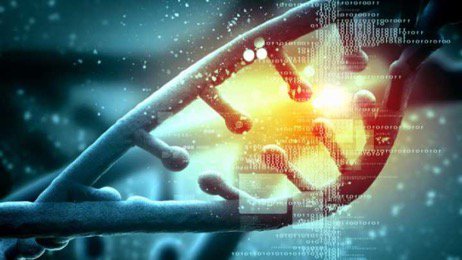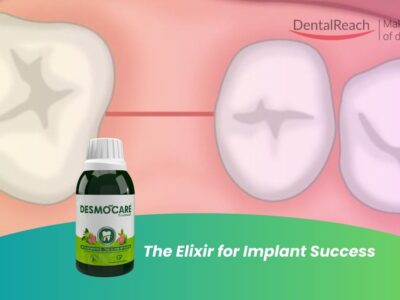
“Any sufficiently advanced technology is indistinguishable from magic.”
~Arthur C. Clarke
It is an axiomatic fact to say that technology has surpassed mankind in every aspect. What if I told you that there is something at the skyline that would prove to be the most transformative contrivance so far? Hereby, introducing CRISPR!
CRISPR: What is it?
CRISPR is an abbreviation that expands to ‘Clustered Regularly Interspaced Short Palindromic Repeats’. As much as the name in itself is a bit complex, it simply means a programmable protein that not only edits, or eliminates, but has the potential to switch on/off genes. Yes, you got that right; it’s a technology that is designed to orchestrate the genetic code, including human DNA.
CRISPR works on the Cas9 technology used by bacteria and archaea which is an RNA-guided genome editing tool to obliterate the viral DNA, delivering immunity to the host against viral nucleic acids. Cas9 proteins are popularly known as “DNA locator systems” since they can be programmed by scientists to target whatever piece of DNA they decide to send it to. Once it is there, they could be licensed with the power to cut out a particular gene, re-activate/inactivate a gene, or replace a gene with something different. Hence, the CRISPR-Cas9 system finds its role in medicine as a powerful therapeutic tool in treating diseases that occur as a result of genomic mutations.

CRISPR’s Miraculous Contribution to Dentistry
Despite the controversial nature of CRISPR as to how, and even if it is to be used at all, paired with the fact that it’s still in its infancy, CRISPR-Cas9 technology finds several potential applications in the field of dentistry, all of which are aimed at bringing a revolution in the dental era. Nevertheless, the practical execution of these uses could take years to develop and implement CRISPR treatments into a dental clinical setup.
However, there have been pieces of evidence that point to the possibility of treatments for some of the most debilitating dental conditions through this technology. Various uses of CRISPR in dentistry found so far are as follows:
- Possible new treatment for oral cancer – Oral Squamous Cell Carcinoma (OSCC) is the most common type of oral cancer that remains a disease with a low survival rate and scarce exceptional treatment options over decades. CRISPR-Cas9 is an emerging technology that has great efficacy in identifying genes responsible for oral cancer pathobiology and assisting in the treatment of the same by gene knockout technique as suggested by Huang et al in 2017 by studying the role of p75NTR gene on human tongue carcinoma. According to this study, several properties of SCC-9 cells are suppressed by the deletion of the p75NTR gene.

Source: Wiley’s Online Library
- Inhibition of plaque formation − As we know well, Streptococcus mutans is the primary bacteria in the oral cavity that creates a biofilm by utilizing sucrose to synthesize an extracellular polysaccharide (EPS) in which the bacterial colonies live and multiply in leading to dental plaque formation. Surprisingly, in a study by Gong T et al, self-targeting CRISPR arrays were formulated and cloned onto plasmids which were later transformed to UA159, acquiring desired mutants that significantly reduced EPS formation and thus, increased breakdown of the biofilm.
While these are some exciting prospects, the studies are still in their preliminary stages and require much more research to bring a technology like this to fruition. But the possibility exists!
- Reduction/prevention of dental caries and periodontal disease − The two most rampant dental diseases – dental caries and periodontitis – could see a significant reduction, if researchers are successful in creating a CRISPR treatment that prevents biofilm formation. This resulting drop would be unparalleled.

Source: Wiley’s Online Library
- Herpes Virus: Herpesviridae is a family of viruses producing oral lesions, such as gingivostomatitis, herpes labialis, mucocutaneous ulcers, infectious mononucleosis, and hairy leukoplakia. Despite using antiviral drugs for treatment, complete clearance of these infections hasn’t been reported. CRISPR-Cas9 system is targeted at inhibition of viral replication or eradication of viral genome from some infected cells by altering specific regions within the genome, and to our surprise, the results are commendable.
- Chronic Pain: Chronic pain is a major concern for many dentists. Various medications provide symptomatic relief, but once the effect of the medicine subsides, pain is aggravated again. With the help of CRISPR, the epigenetic marker that activates the pain pathway can be mutated to downregulate the passage of pain signals across the neural channel.
Is CRISPR posing threats?
While we are cast under the spell of the CRISPR technology and it’s innumerable benefits, it doesn’t come without culpabilities. This technology terminates with the rewriting of human DNA, hence it requires careful consideration and thorough knowledge before the decision of changing one’s genetic code comes into being. GENETIC DRIVE is a potential consequence where the altered genome sits in the cells and expresses itself through generations.

‘Designer Babies’ is no longer a sci-fi scenario. With CRISPR present inadvertently, there is a possibility that gene modification technology could one day allow the incorporation of chosen traits into embryos.
CRISPR finds no role in underdeveloped or still developing nations. Since it’s a powerful innovation, CRISPR is unfit for use on the poor strata of the society, being astronomically expensive.
CRISPR & Covid-19
As of 2020, a CRISPR-based diagnostic test for the COVID-19 pandemic scenario has been approved by the FDA. CRISPR, having an ability to link onto any genetic material, quickly gives results of various samples within an hour. With endless benefits to the medical fraternity, the day isn’t far where CRISPR will change dentistry permanently by eliminating the root cause of various dental diseases.
Conclusion
Here we are, in the 21st century, at the brink of modern medicine, where CRISPR presents itself to be a lifesaver. While, how supernatural it may sound to be able to play with the human genetic code; it is still something that could leave an everlasting and an accidental impact for the generations to come. Will it potentially outshine the influence of a smartphone in our lives? The answer lies with time, keep a look out for that!
References
- The Medical Futurist: The amazing future of dentistry and oral health (2016)
Retrieved from: www.medicalfuturist.com - Colfer C. What is CRISPR and how could it change Dentistry? Dental Hygiene, 2020. Retrieved from: www.todaysrdh.com.
- Martinez-Lage, M.; Puig-Serra, P.; Menendez, P.; Torres-Ruiz, R.; Rodriguez-Perales, S. CRISPR/Cas9 for Cancer Therapy: Hopes and Challenges. Biomedicines, 2018; 6(105).
- P. Huang et al. Generation and characterization of a human oral squamous carcinoma cell line SCC-9 with CRISPR/Cas9-mediated deletion of the p75 Neurotrophin receptor. Archives of Oral Biology, 2017; 82: 223–232.
- Ishino Y, Krupovic M, Forterre P. History of CRISPR-Cas from encounter with a mysterious repeated sequence to genome editing technology. J Bacteriol, 2018; e00580-17.
- Dr. Daya K. Jangam, Dr. Kajol M. Talreja. Applications of CRISPR Technology in Dentistry: A Review (2020) Retrieved from: European Journal of Biomedical and Pharmaceutical sciences.




















Comments